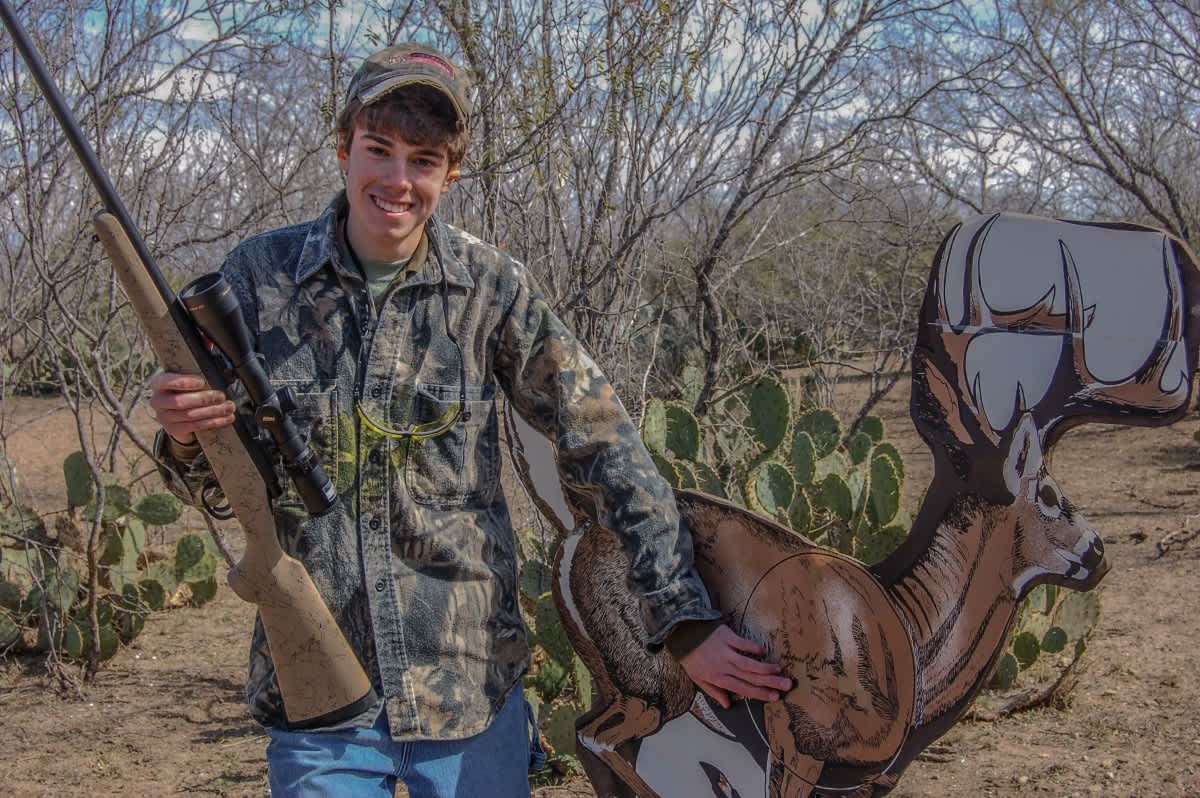Shooting with the Mann: Practice Smart, Shoot Better
Richard Mann 09.19.16

Most hunting guides will tell you that all deer hunters are the same, some just shoot better than others. In the end, it all comes down to the shot. Think about how many times a hunting buddy has told you, “I got a shot at a really nice buck.” The object of hunting is not getting shots it’s making them.
Practice makes you a better shot, but many hunters don’t know what kind of practice will help them shoot better in the field. It’s not shooting groups from the bench. You need to practice shooting targets that look like deer, from positions and in situations replicating what you might see while hunting.

Lifelike Targets
Why use lifelike, life-size deer targets? It’s simple. By practicing on targets resembling what you’ll ultimately be shooting, you create a mental picture of what the sights should look like when it’s time to pull the trigger. That’s why bowhunters shoot at 3D targets.
If you shoot only at circles or squares, then your brain will learn to quarter the target with the reticle and you’ll become conditioned to aiming center mass. The last thing you want is to shoot a deer center mass. Center mass equals gut shot. Professional guides will tell you they often see bullets in the gut. Why? Stressed hunters default to their training and aim center mass. Realistic targets teach deer anatomy and where to place your shots.
Here are three drills you can use to get ready for firearms deer season. Practice them and you’ll shoot better and be ready to fight off buck fever. Remember, buck fever is a combination of excitement and performance anxiety – worry that you can’t step up and deliver the bullet on target before the target is gone. Practice builds confidence. It’s the best medicine you can take for buck fever.

Basic Skills Drill
Start practicing this drill well before gun season. It will set the foundation for all your other training. Place a deer target at 50 yards. Draw a 5-inch circle on the backside of the target, directly opposite your special aiming spot. Take your .22 rifle and from the standing, off-hand position, fire five shots at the target. Try to fire them all in less than a minute. If you can keep all five shots inside that 5-inch circle, then you’re doing well. If not, work on the basics: sight alignment and trigger control, and do a lot of dry-firing. As you see improvement, reduce your allotted time and then finally switch to your deer rifle.
Sling Drill
After you get a handle on the basics, it’s time to get more dynamic with your training. Use that same full-size deer target at 50 yards, and get a buddy to run a stopwatch or use a shot timer. Start with the rifle slung over your shoulder and then see how long it takes you to un-sling, get on target, and get a hit in the vital zone. Remember that 5-inch circle? Try this five times for an average. Skilled hunters can get a lethal hit in less than 3 seconds.

Position Drill
Unless you hunt only while sitting from a stand, you might be required to shoot from the kneeling, standing or prone position. Again, use that 50-yard deer target and your .22 rifle. Work on shooting from these positions at your own pace. Training with a .22 not only saves money, but the lack of recoil and muzzle blast lets you concentrate on the skills you’re trying to master.
Once you’re confident, place deer targets at 50, 75 and 100 yards. Start the drill standing, facing the 50-yard target with your rifle slung on your shoulder. Fire one shot from the standing position at the 50-yard target. Go kneeling and shoot the 50-yard target again. Then, switch to the sitting position and engage the 75-yard target. Finally, go prone and shoot the 100-yard target.
This drill challenges you to get in different positions and operate your rifle fast. The stopwatch adds stress just like antlers do. If you can get four kill zone hits, from four different positions, in less than 30 seconds, you’re shooting better than most gun writers. As a minimum, your goal should be four vital zone hits in less than 60 seconds and better yet, 45 seconds.

